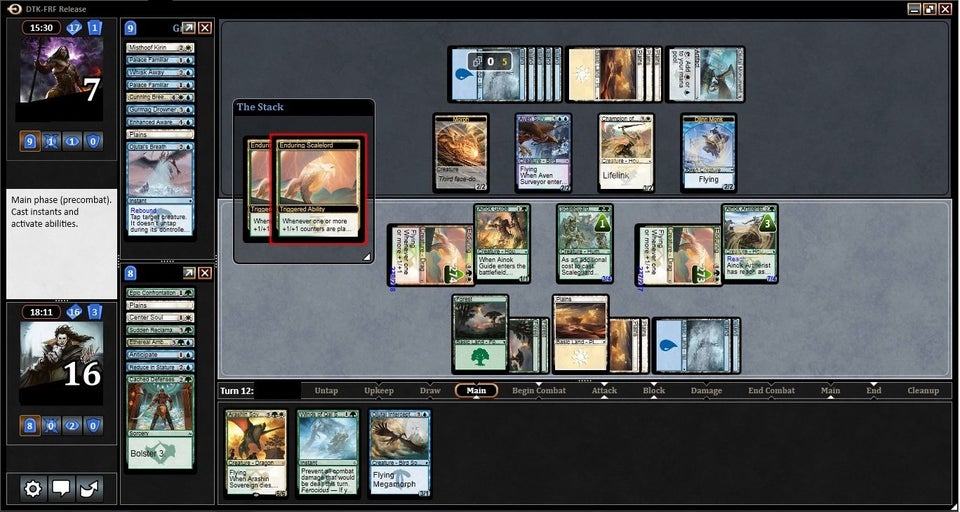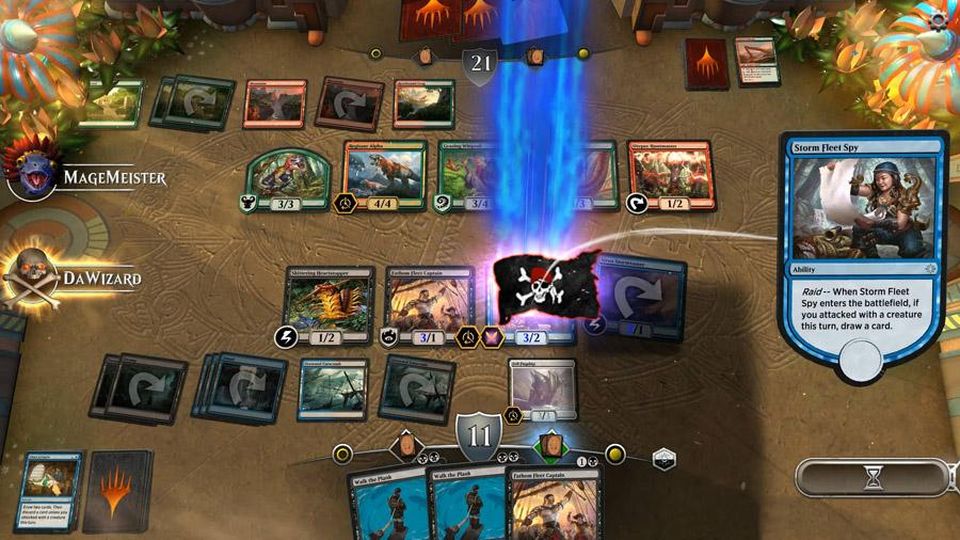Published December 13th, 2019
This is going to be another short musing about Magic the Gathering, but I think that it applies across all games as society becomes more digital. Skip to the bottom for the TLDR.
If you’re not aware, there are currently three different ways that you can play Magic. The traditional version (the one I was introduced to) is with the physical cards. You go to a local game store with your deck of cardboard cards, sit down at a table with another human being, shuffle your deck and play Magic.

Settle down Elijah! Some Magic players, myself included, prefer what we call “playing in paper.” Don’t get me wrong, I’ll take my fix however I can get it, but there is nothing like holding the cards in your hand and reading your opponent.
The next way to play is MtGO, Magic the Gathering Online (commonly pronounced “Moto”). This was the first online version of the game that Wizards of the Coast launched in 2002, and boy does it feel like it. All of the necessary tools and interactions are there, and you can play a full game of Magic, but boy is it ugly. The menus are not intuitive, it takes way, WAY too much clicking to make things happen, there are no graphical enhancements or sound effects, but it has worked for almost two decades.
The last and newest way to play is Magic Arena. Instead of releasing a new version of MtGO, Wizards decided to launch an entirely new program with better user interfaces, streamlined game play, and cool sound effects and flashy graphics. I’ve played both MtGO and Arena, and Arena is by far the cleaner, more exciting experience.


There is a huge discussion about the in-game economics surrounding MtGO and Arena, but I’ll save that for another time. What I want to talk about is the paper version of the game versus the digital platforms.
In all three versions, you have to own the cards in order to play them, and in each version, you have to spend real resources to obtain the cards. But owning the cards on one platform doesn’t mean you have them on all platforms. This drives people to invest heavily in one (usually their favorite) while dabbling in the others. Or, if you’re lucky enough to have the disposable income, you get to spend all of your money owning all of the cards on all platforms; hurray!
This sets the stage for our discussion. Imagine you are the manufacturer of this game, and you have three platforms that you can use to deliver content and earn revenue. How do you maximize your profits using these tools?
First, you want all of your players to play as much Magic as possible. This means that you (1) want to support all three platforms without alienating their player base and (2) you want to encourage or incentivize players to play on all three. Wizards has done a decent job of this in my opinion. While MtGO is clearly a legacy platform, they continue to update the software with the new cards and mechanics allowing people to play the latest and greatest cards on the old platform. At the same time, if you go to any sanctioned paper tournaments, you’re likely to receive coupons for free products on Arena.
Second, and this is the tricky part, how do you encourage players to invest as much money as possible across all platforms? There is much speculation, but I think I see how Wizards plans to accomplish this. You have to understand that cards have been regularly printed for Magic since 1993. There is an established release schedule and new cards are printed every few months. With the ever expanding card pool, different formats exist to appeal to different types of players. Each format has different sets of cards that are allowed and different events where the format is played. For a list of the officially supported formats, check out this page.
I think the format divisions are the key to maximizing profit here. Standard (arguably the most popular format) uses only the newest cards that have been printed. This means that if you’re a dedicated standard player, you buy a lot of cards fairly often. This was honestly my biggest complaint when I played back in the day. I loved standard, but I spent upwards of $500 every three months on the game. Every time a new set came out, I needed to heavily invest in the cards in order to stay competitive. However, Magic Arena is now the go-to platform for standard play. While cards on arena aren’t much cheaper, the digital aspect of the game has allowed Wizards to add in-game currency and incentives for playing. This means that as I play on Arena, I earn “free” cards and products that I wouldn’t if I were playing in paper.
So where does all this convoluted rambling lead. My hypothesis is that Wizards is pushing standard players to arena, older formats (like pioneer and modern) to paper, and very old formats (legacy and vintage) to MtGO. As a standard player, if I play most of my games on Arena, I’m still investing in the game and the cards, but at a discount that I can appreciate because of the free product. Not to mention that Arena is on my computer, which means I can play (and spend my money) whenever I want. But it makes way more sense to play standard on Arena because things change so fast. Every time a new set comes out, I have to change everything. Buying all the new cards in paper was far more expensive than “saving” and buying them on Arena is. However, once I know which cards I like, I can buy the paper versions for the expanded formats; a card will be legal in pioneer and modern forever, so I don’t have to worry about losing my investment. Plus, since I’ve played so much on Arena, I know better which cards I want to invest in for the long term.
TLDR and Conlusion: I think Wizards’ master plan is drive standard players to arena, extended formats to paper, and legacy formats to MtGO, while supporting all formats (or as many as possible) across all platforms. This deconflicts their platforms and gives players a clear place to go depending on what they want to play.